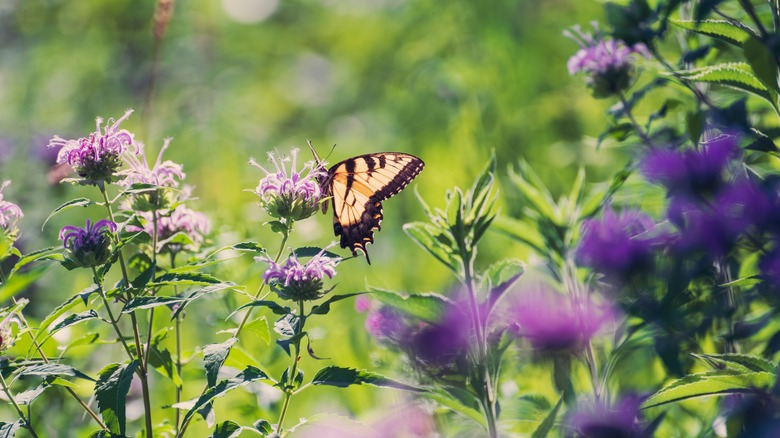Is Lion's Ear Invasive? What To Know Before Growing
Lion's Ear (Leonotis nepetifolia) is an herbaceous flowering plant in the mint family. Originally native to India and Africa, this vibrant, colorful pollinator magnet has spread all over the world. Loved by gardeners for its beautiful late-blooming flowers that attract honeybees, hummingbirds, and butterflies lion's ear has made its mark on pollinator gardens. While it is indeed a beautiful addition to a pollinator garden, it is not native to North America, which presents some issues, naturally. Not only is it not native, but it is also considered at risk for being invasive in certain states. It is already known to be an invasive pest in Hawaii and Australia, and Southern U.S. states like Florida are beginning to recognize its high invasion risk.
It's worth examining the real threat of this plant to our native ecosystems before you consider planting it in your garden. Many invasive plants that have caused devastating damage to our local ecosystems started as seemingly harmless garden plants, and before we knew it, they became impossible to control. Well-intentioned gardeners looking to attract hummingbirds to their gardens may have come across some sources recommending this plant. As gardeners, it is our job to ensure we protect our native ecosystems by planting for biodiversity and supporting pollinators.
Lion's ear: friend or foe?
A strikingly beautiful specimen in the garden, lion's ear can achieve heights of 5 feet and four feet wide. Covered in tubular, unique, fiery orange blossoms, it's no secret that this lioness of the garden is a friend to pollinators. However, even though a plant provides nectar and food for pollinators, that does not absolve it from causing problems at an ecological level. Invasive plants disturb the structure of ecosystems, which, in the long run, causes devastating damage to our pollinators. If you want to truly benefit native pollinators, plant their host plants, too, not just nectar plants. Lion's ear may provide nectar, but it is not a host plant for any pollinator in North America since it is native to an entirely different continent.
Invasive plants that provide nectar draw pollinators away from our native species, further degrading our native plants and ecosystems. Additionally, when an invasive plant escapes a garden, it has the potential to completely overtake wild spaces, outcompeting native plants and decimating our ecosystems. Furthermore, while lion's ear is a stunner in the garden, it is more of a foe than a friend. It spreads primarily through seed, and its growth habit is large and cluster forming, so it can easily dominate an area and outcompete surrounding native vegetation. Don't despair, though; there are plenty of native alternatives that are just as beautiful and provide even more benefit to our pollinators.
Native Alternatives to Lion's Ear
Regardless of where you live in the United States, there are plenty of native alternatives to lion's ear. The Xerces Society, an organization dedicated to the conservation and preservation of invertebrates, provides a native plant list for each state, where you can easily find native plants that attract pollinators in your area. Some of the best native plants to plant if you live in the Southeast include echinacea, vining coral honeysuckle, asters, buttonbush, beebalm, and more. All across the U.S., there are plenty of gorgeous wildflowers that contribute to biodiversity and are not invasive. Goldenrods, asters, and bee balms are all excellent native options for a stunning pollinator garden, with different varieties native to all parts of the U.S.
Bee balm closely resembles the shape of lion's ear, so you can enjoy a similar look and benefit native ecology. While there is no end to lion's ear's beauty, it can cause more harm than good in the garden. If your goal is to foster biodiversity and attract pollinators to your garden, opt for native alternatives instead. By incorporating a few keystone native species that wildlife depends on, you are effectively curbing the effects of biodiversity and habitat loss with your very own garden.


